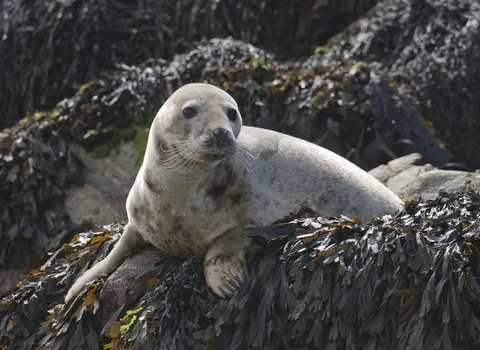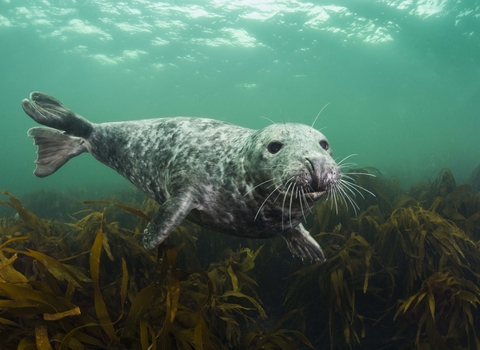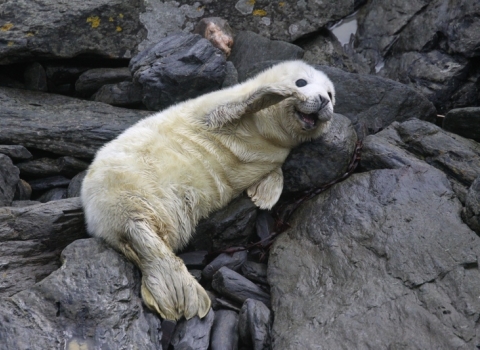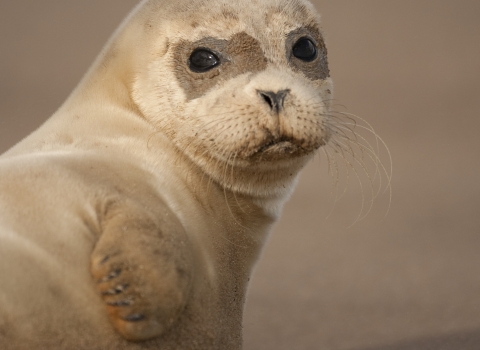
Grey Seal ©Chris Gomersall/2020VISION

Grey Seal ©Alex Mustard/2020VISION

Seal pup by Tom Marshall

© Eleanor Stone
Grey seal
Have you ever seen the curious face of a grey seal bobbing in the waves when visiting the beach? Grey seals can be seen lying on beaches waiting for their food to go down. Sometimes they are accompanied by their white fluffy seal pups that look like balls of cotton wool!
Scientific name
Halichoerus grypusWhen to see
January to DecemberSpecies information
Category
Statistics
Length: up to 2.6m Weight: Males up to 300kg, females up to 200kg. Average Lifespan: 30-40 yearsProtected in Britain under the Conservation of Seals Act 1970. Also protected under the Wildlife (Northern Ireland) Order 1985 and the Marine (Scotland) Act 2010.

